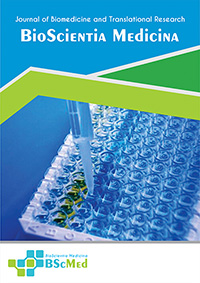Main Article Content
Abstract
Background: Lithium is a cornerstone therapy for Bipolar I Disorder, yet its use necessitates vigilant monitoring for adverse drug reactions (ADRs). While lithium-induced hypothyroidism is a well-documented complication, the emergence of thyrotoxicosis secondary to destructive thyroiditis is a rare and diagnostically challenging event. This report presents a systematic analysis of a case of suspected lithium-induced thyroiditis notable for its paradoxical clinical presentation as a severe depressive episode.
Case presentation: A 33-year-old female with a 10-year history of Bipolar I Disorder, stable on lithium for two years, was admitted with a severe depressive episode and active suicidal ideation. The onset of her psychiatric decompensation was temporally correlated with a diagnosis of thyrotoxicosis (suppressed TSH <0.005 uIU/mL; elevated FT4 >7.77 ng/dL). A formal causality assessment using the Naranjo Adverse Drug Reaction Probability Scale yielded a score of 6, indicating a "probable" relationship between lithium and the thyroiditis. Critically, the thyrotoxic state, which conventionally mimics mania, presented atypically as severe depression.
Conclusion: This case of probable lithium-induced destructive thyroiditis, presenting paradoxically with severe depression, underscores the critical need for a high index of suspicion for iatrogenic endocrinopathies in patients on lithium who exhibit any mood destabilization. A systematic approach to ADR assessment is essential to guide appropriate clinical management in such complex presentations.
Keywords
Article Details
As our aim is to disseminate original research article, hence the publishing right is a necessary one. The publishing right is needed in order to reach the agreement between the author and publisher. As the journal is fully open access, the authors will sign an exclusive license agreement.
The authors have the right to:
- Share their article in the same ways permitted to third parties under the relevant user license.
- Retain copyright, patent, trademark and other intellectual property rights including research data.
- Proper attribution and credit for the published work.
For the open access article, the publisher is granted to the following right.
- The non-exclusive right to publish the article and grant right to others.
- For the published article, the publisher applied for the Creative Commons Attribution-NonCommercial-ShareAlike 4.0 International License.





